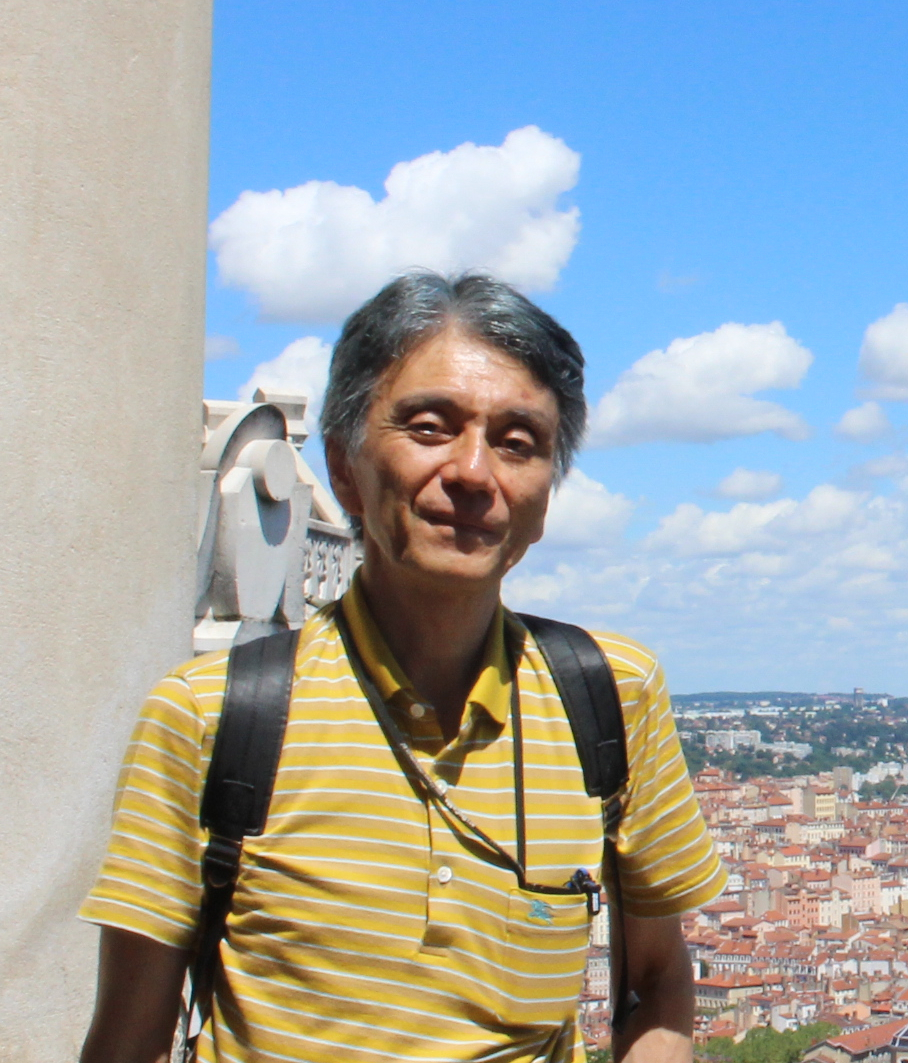Mechanical engineers and electrical engineers have different mental models of oscillation
(Diary of an Old AI Researcher who is still Programming)
30 October 2019
When I was a young associate professor, a professor of flight dynamics
- great Professor K - suddenly came to my office and said,
‘Professor Hori, since your major was electronics, let me ask you a
question. A radio wave of higher frequency has larger energy than a radio
wave of lower frequency. Is this correct?’.
I answered, ‘No, I do not think so, sir, Professor K. If a radio wave
of higher frequency has larger energy than a radio wave of lower frequency,
UHF TV stations should spend more electricity charge
than the VHF TV stations. I have never heard that.’
Professor K continued, ‘But imagine you are in a bath tub.
When you make a water wave of higher frequency by tapping the surface of
the hot water in the bath tub, you get more tired than when you make
a wave of lower frequency. Professor M of fluid dynamics says I am right.’
I was surprised, ‘What? Professor M also says so? OK, let me go to the library
and confirm.’
At that time, we did not have the world wide web, yet,
and I went to the library of the
department of electronics.
Of course, there is no relation between the frequency and the energy in radio
waves(*1). I heard afterward that the great professor K was investigating the
problem of intrusion into auto-pilot systems of airplanes.
When I tell this episode while drinking with my colleague professors of
the school of engineering, the reactions are always far stronger than I expect,
and a long argument emerges with laughter.
At first, most of the engineering professors who majored in mechanical
engineering respond ‘I think the great professor K is right!’.
They say, ‘Imagine a mass and a spring. When the mass moves faster,
the mass has more energy. So, the oscillation of higher frequency has larger
energy.’
I say, ‘No, imagine a simple pendulum. If we give the same initial potential
energy, the oscillations have the same energy independent of the
frequencies.’
Isn't this interesting?
The basic mental model of oscillation is the mass-spring system in
the mechanical
engineers' minds, and the basic mental model of oscillation is a simple
pendulum in the electrical engineers' minds.
I have not examined this hypothesis on the engineers' mental models
scientifically, but,
I believe that you will get the same responses from the engineers if you
tell this episode.
By the way, even in the mass-spring model, the oscillation has the same
energy independent of the frequency if we give the same initial potential
energy, of course. But, in the mechanical engigneers' minds,
the figures of the oscillations of the same amplitude seem to be drawn
unconsciously.
If the mass and the amplitude are fixed and the spring constant is
changed, the energy and the frequency will change.
If you like, please confirm the formulae below. :-)
,
,
where is energy, is frequency, is
spring constant, is amplitude, and is mass.
Sorry, depending on your browsers, the above formulae may not be shown correctly(*2).
In a plain text, the above formulae are,
E = (1/2)*k*(A squared),
f = (1/2π)*squareroot(k/m).
Moreover, in many cases, resonance is a dangerous phenomenon for mechanical
engineers, while it is a phenomenon positively used for electrical engineers.
(*1) In electromagnetism, the energy density of a radio wave is the
sum of the energy density from the electric field and the
energy density from the magnetic field, which are independent of the
frequency.
On the other hand, in quantum mechanics, when we consider the
particle nature of electromagnetic radiations, a photon has
the energy of hν, where h is the Planck constant and ν is frequency.
We can say Professor K was right in a sense, focusing on one photon.
(*2) MathML is used. Following is the source html code.
<math> <mi>E</mi> <mo>=</mo> <mfrac><mn>1</mn><mn>2</mn></mfrac><mi>k</mi><msup><mi>A</mi><mn> 2</mn></msup> </math>, <br> <math> <mi>f</mi> <mo>=</mo> <mfrac><mn>1</mn><mrow><mn>2</mn><mi>π</mi></mrow> </mfrac><msqrt><mfrac><mi>k</mi><mi>m</mi></mfrac></msqrt> </math> ,<br>
© 2019 Koichi Hori
Related entries (automatically calculated):
On This Day: Atomic Bomb Dropped on Nagasaki
Culture as the base of our country: Prof. Inose
UAV/UGV Autonomous Cooperation
AI (Artificial Intelligence) and Philosophy
Aligning Facebook button and Twitter button
Difference between Science and Engineering
css <pre> and <code> for mobile devices
What an old AI researcher thinks after watching the movie "Green Book" - about Racism, Discrimination, and AI (Artificial Intelligence)
UNESCO: `Do you know AI or AI knows you better? Thinking Ethics of AI'
Toward AI-embedded Society where AI is Not Recognized as AI
Using Python on Windows
Redirecting URL in Ruby on Rails
Unicode decode error "'utf-8' codec can't decode byte 0xfa in position 0: invalid start byte" when using MeCab
Using unicode characters in Windows command line
AI support for Ethical AI Design
The University of Tokyo Academic Archives Portal - UTokyo Digital Collections
Koichi Hori Top page
Login window freezes when making VNC connection from Windows to Mac
What is Artificial Intelligence?
A small Lisp program which uses Google Translation API
Showing the favicon in Google search results
AI ELSI Award
Koichi Hori: Last Lecture
A small program which extracts rhythmic word sequences such as Tanka(57577) or Haiku(575) from a plain text
Civilization, Culture, Science, and Technology
Koichi Hori
